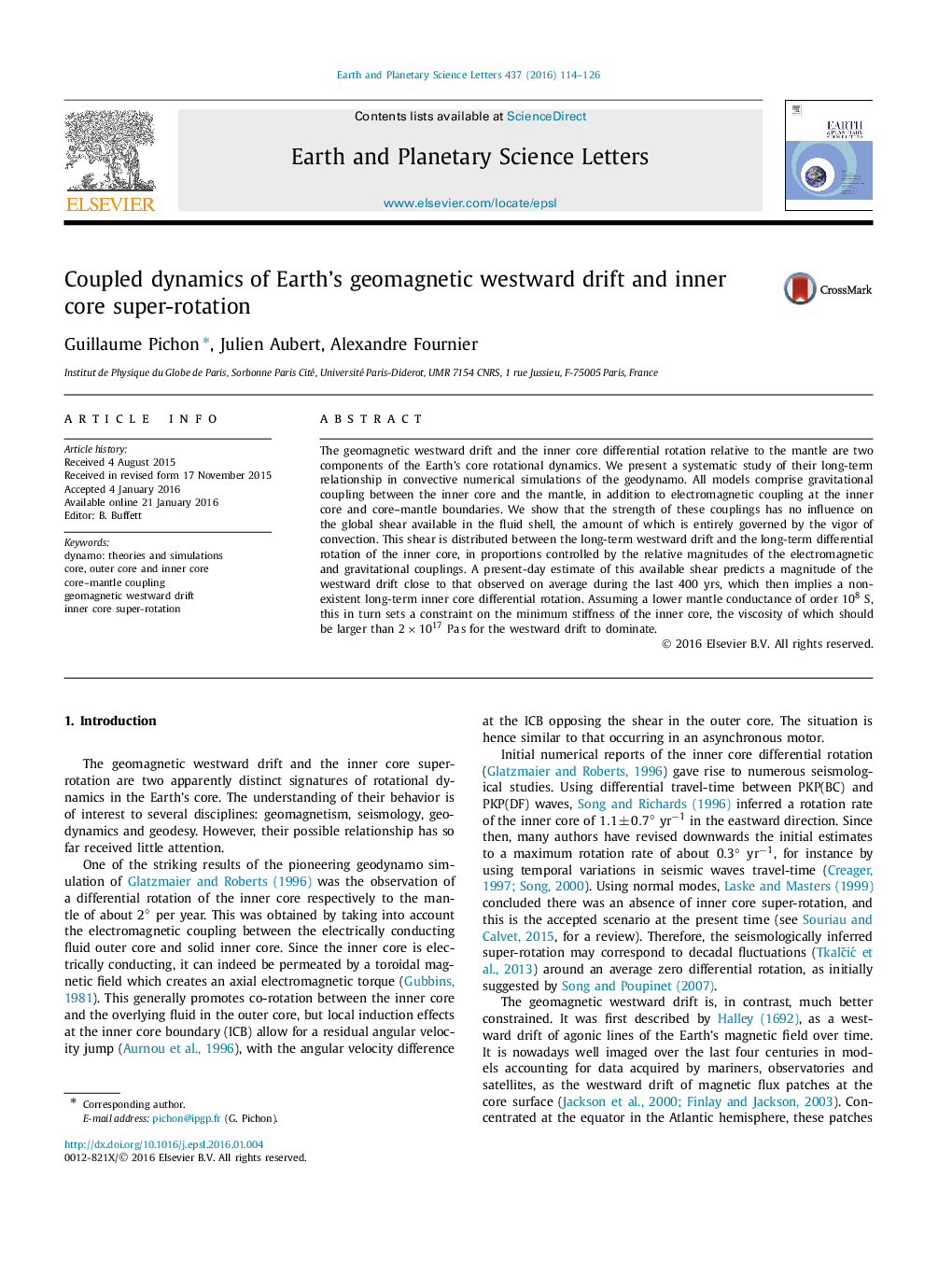| Article ID | Journal | Published Year | Pages | File Type |
|---|---|---|---|---|
| 6427674 | Earth and Planetary Science Letters | 2016 | 13 Pages |
â¢We model the coupled rotational dynamics of Earth's core and mantle.â¢The modeling includes gravitational and electromagnetic torques.â¢The total shear budget in the outer core is controlled by the vigor of convection.â¢Our theory links the geomagnetic westward drift and the inner core super-rotation.â¢Geomagnetic westward drift precludes inner core super-rotation.
The geomagnetic westward drift and the inner core differential rotation relative to the mantle are two components of the Earth's core rotational dynamics. We present a systematic study of their long-term relationship in convective numerical simulations of the geodynamo. All models comprise gravitational coupling between the inner core and the mantle, in addition to electromagnetic coupling at the inner core and core-mantle boundaries. We show that the strength of these couplings has no influence on the global shear available in the fluid shell, the amount of which is entirely governed by the vigor of convection. This shear is distributed between the long-term westward drift and the long-term differential rotation of the inner core, in proportions controlled by the relative magnitudes of the electromagnetic and gravitational couplings. A present-day estimate of this available shear predicts a magnitude of the westward drift close to that observed on average during the last 400 yrs, which then implies a non-existent long-term inner core differential rotation. Assuming a lower mantle conductance of order 108S, this in turn sets a constraint on the minimum stiffness of the inner core, the viscosity of which should be larger than 2Ã1017Pas for the westward drift to dominate.
